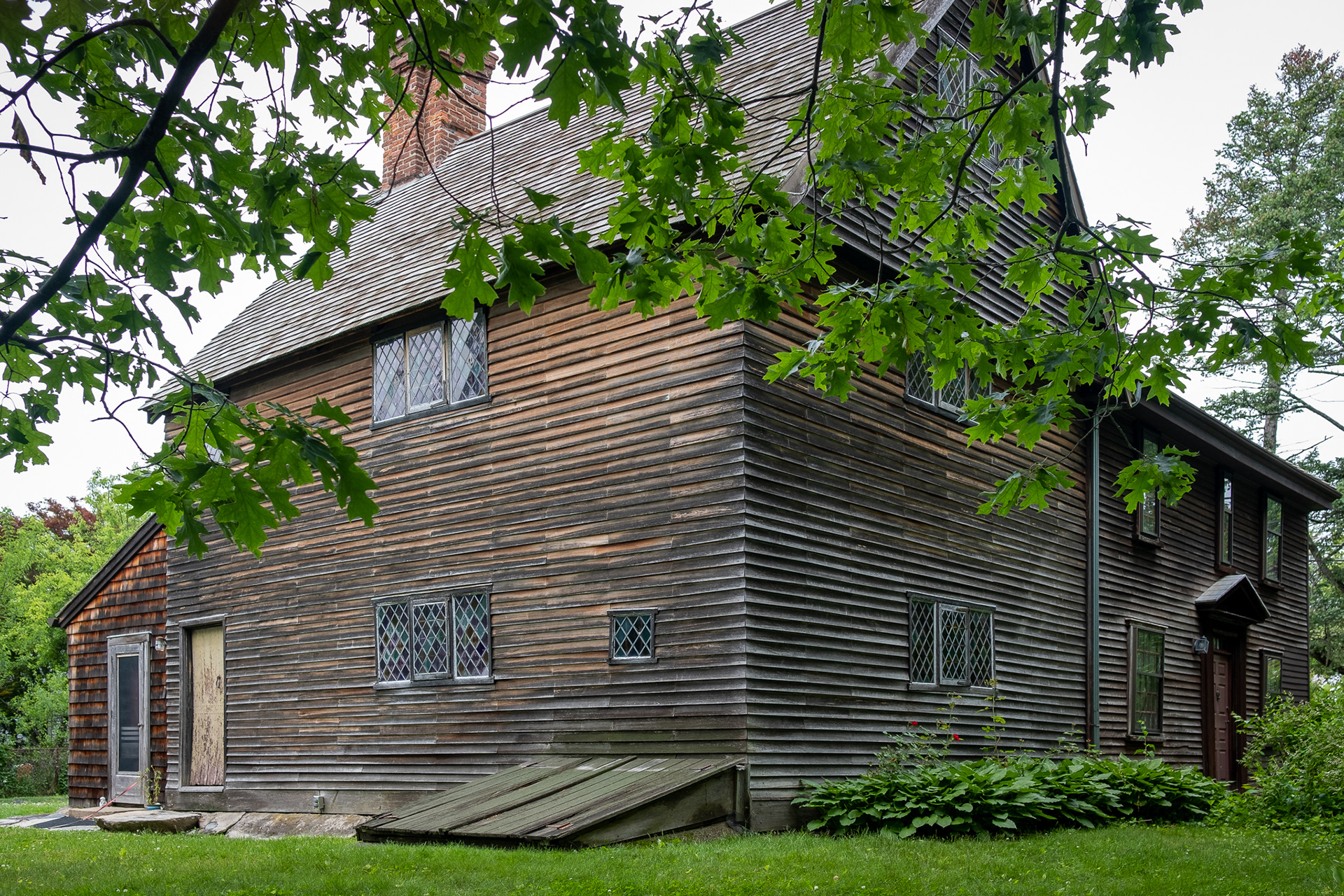

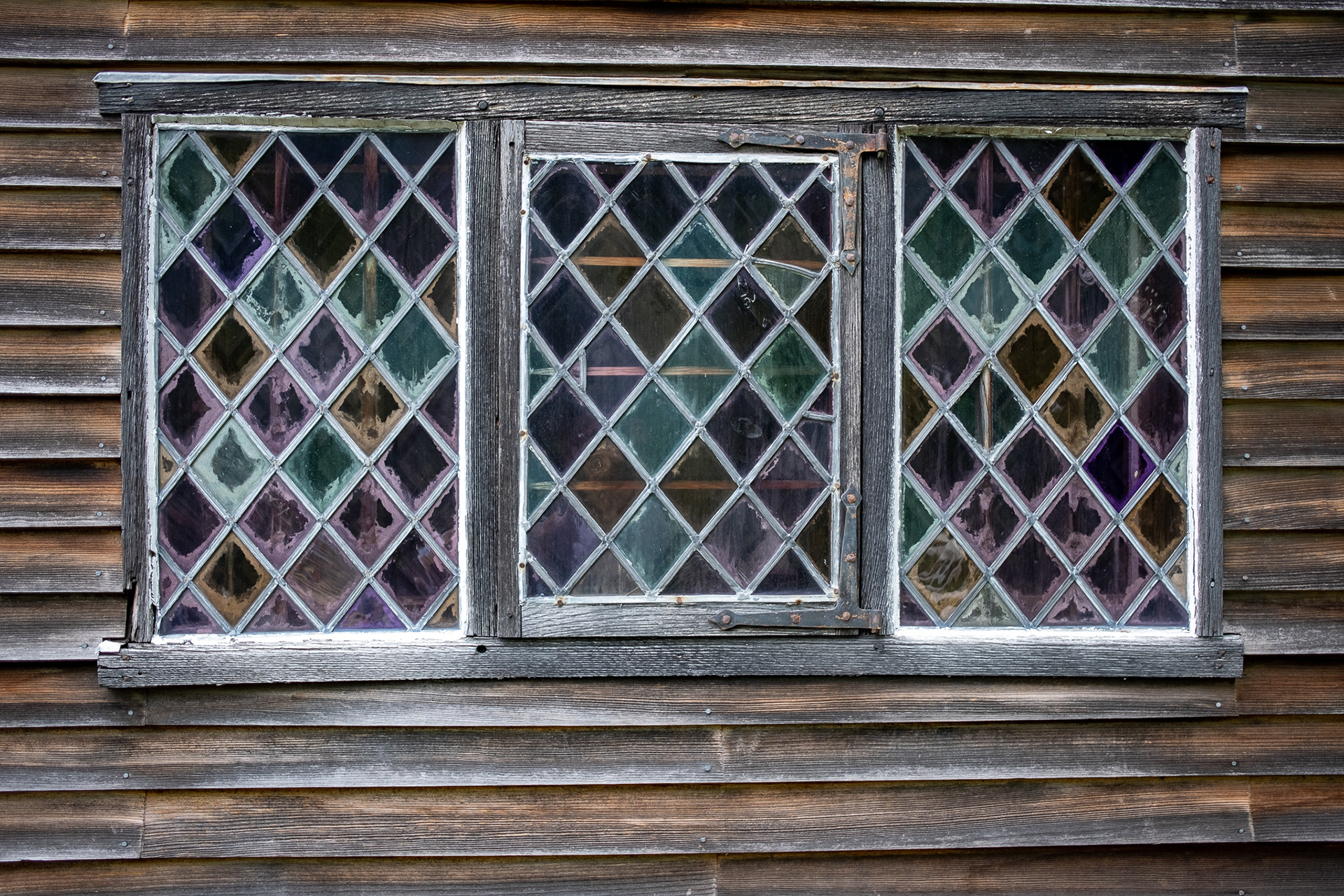
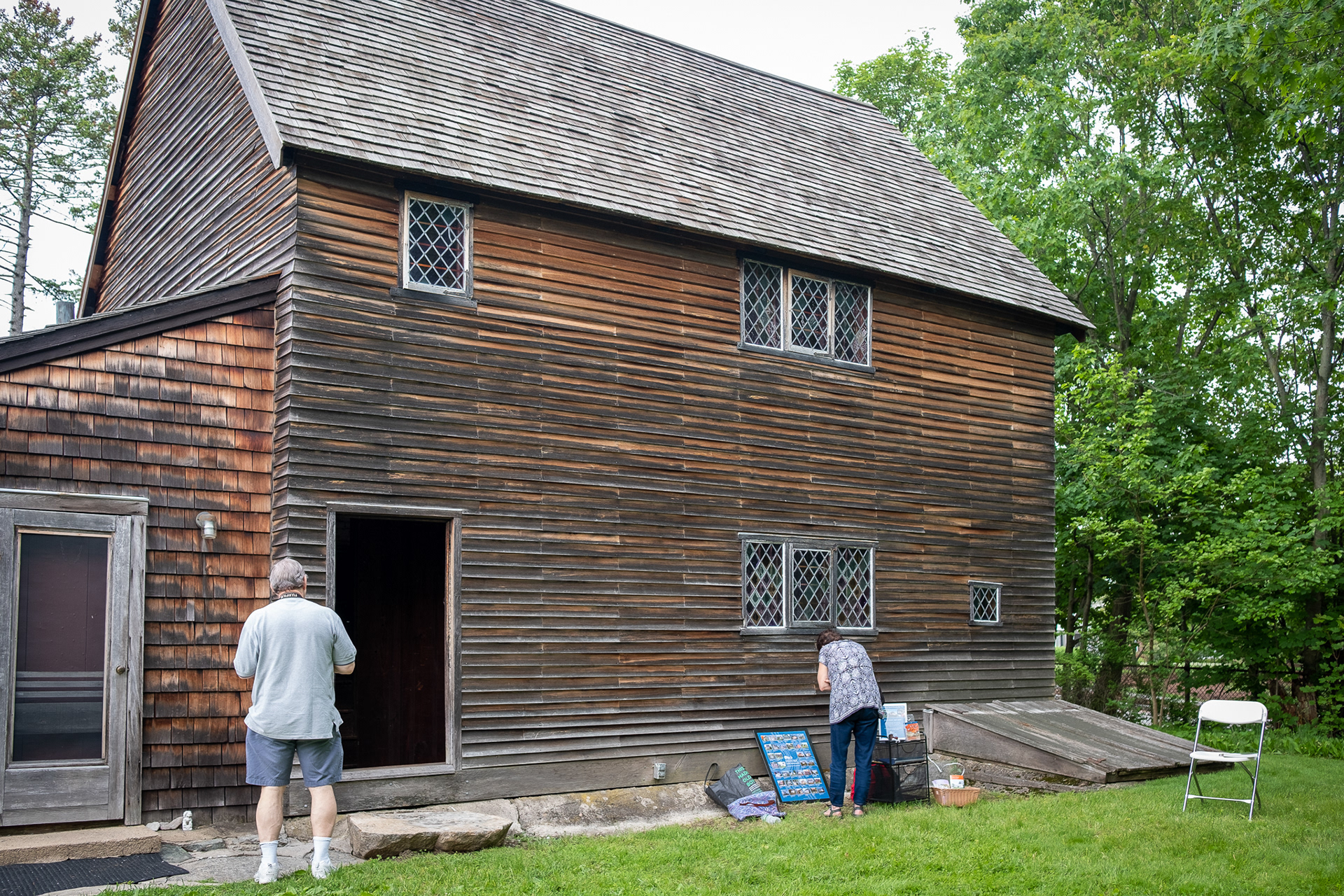
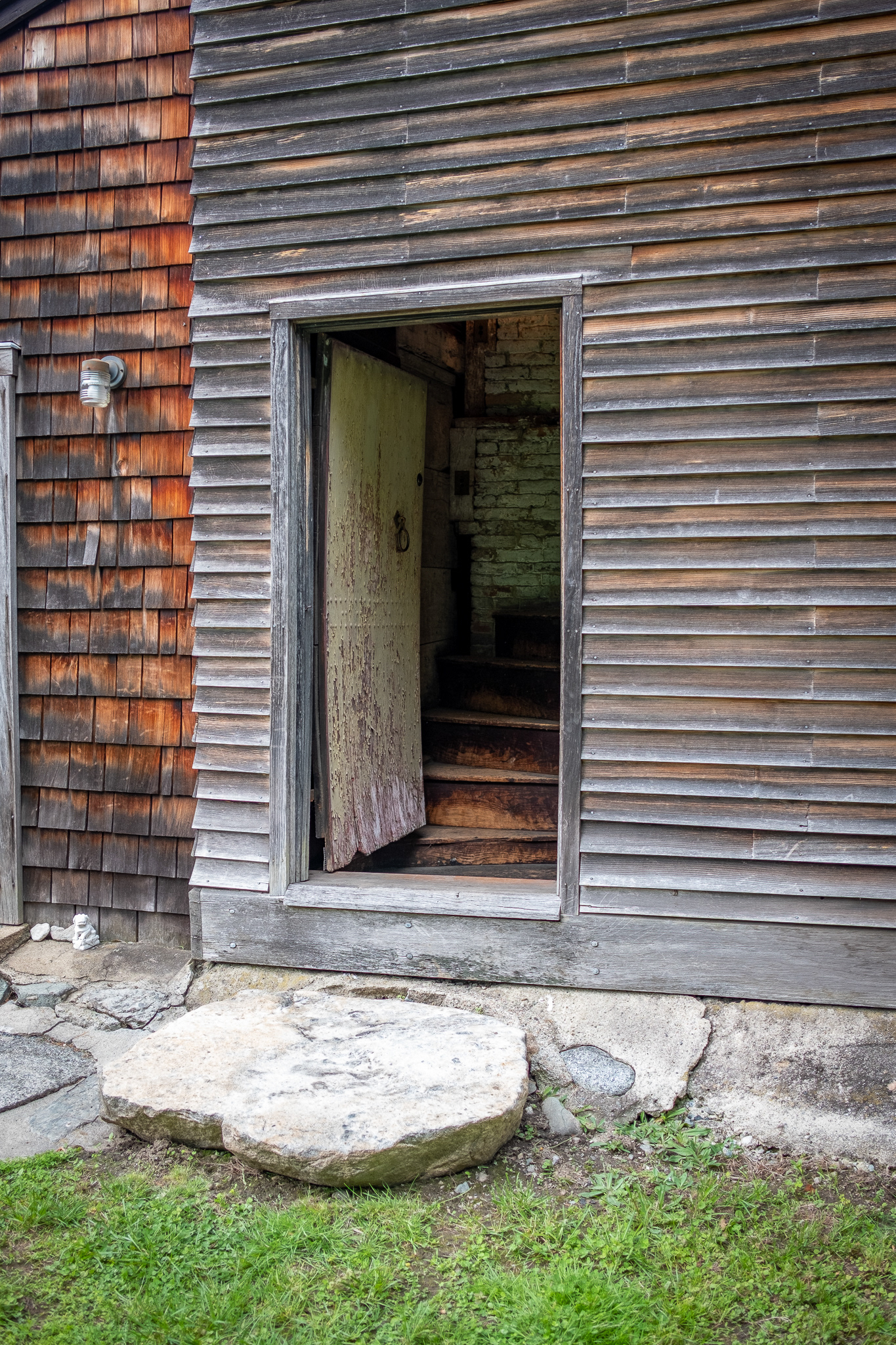
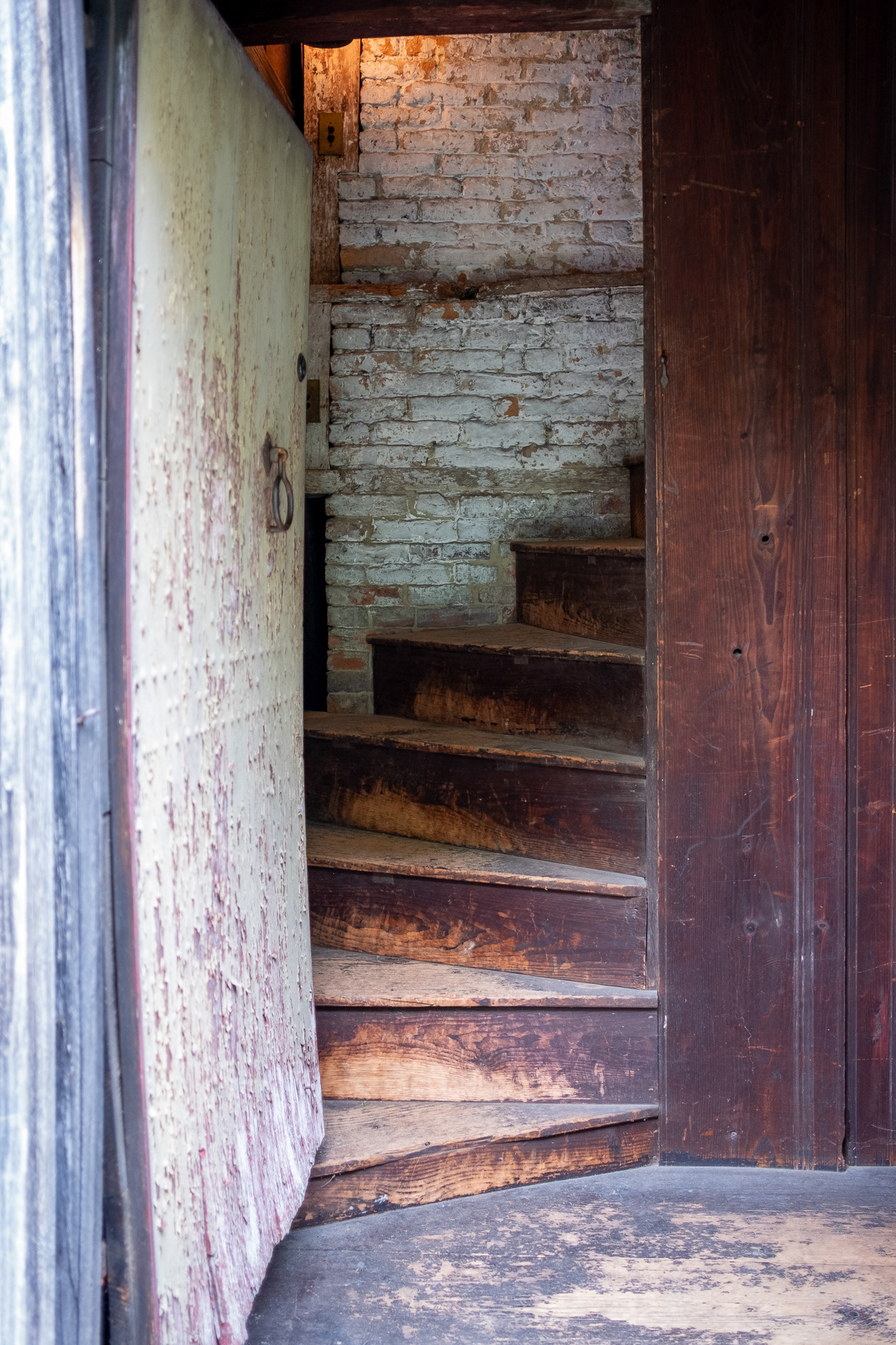




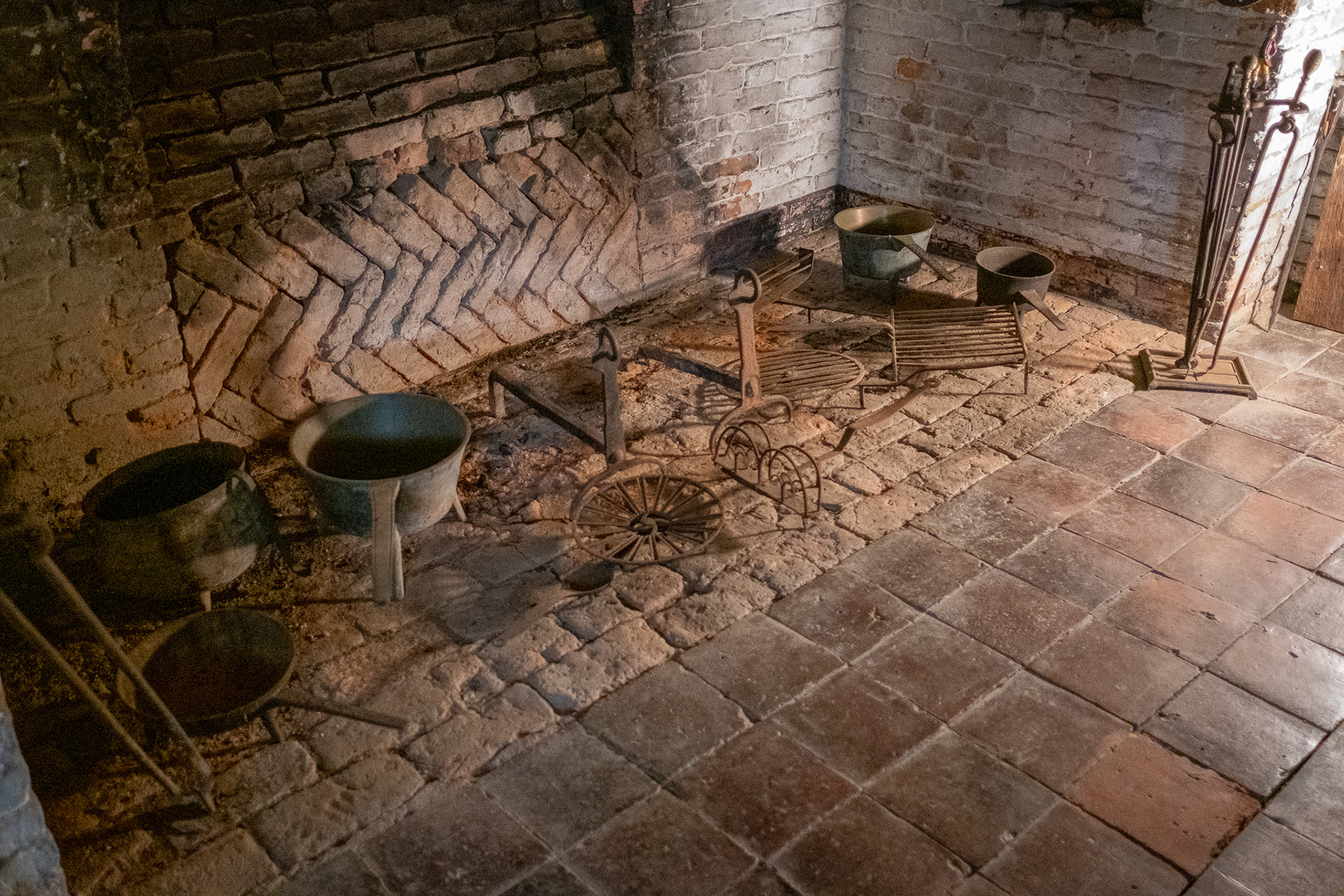
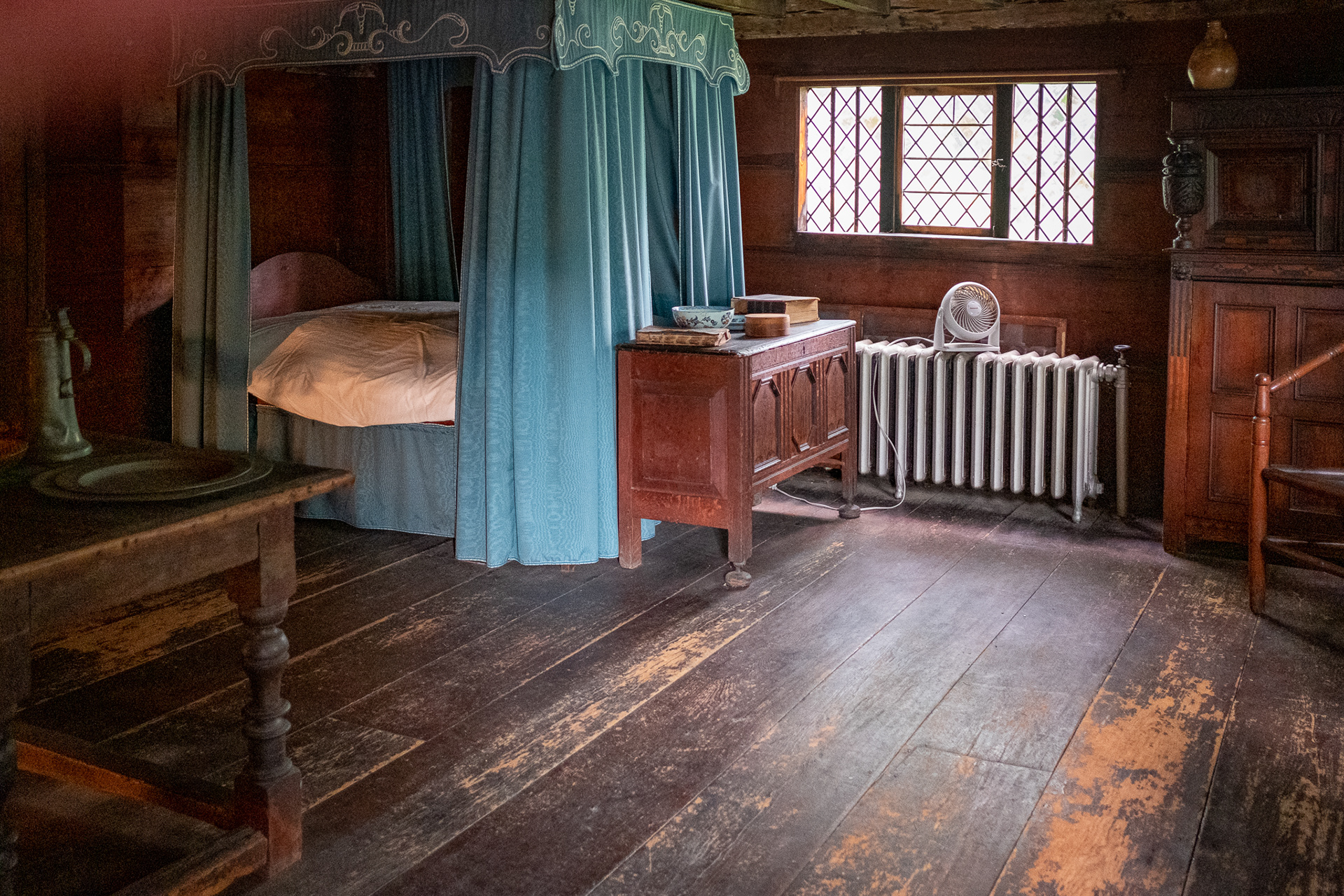


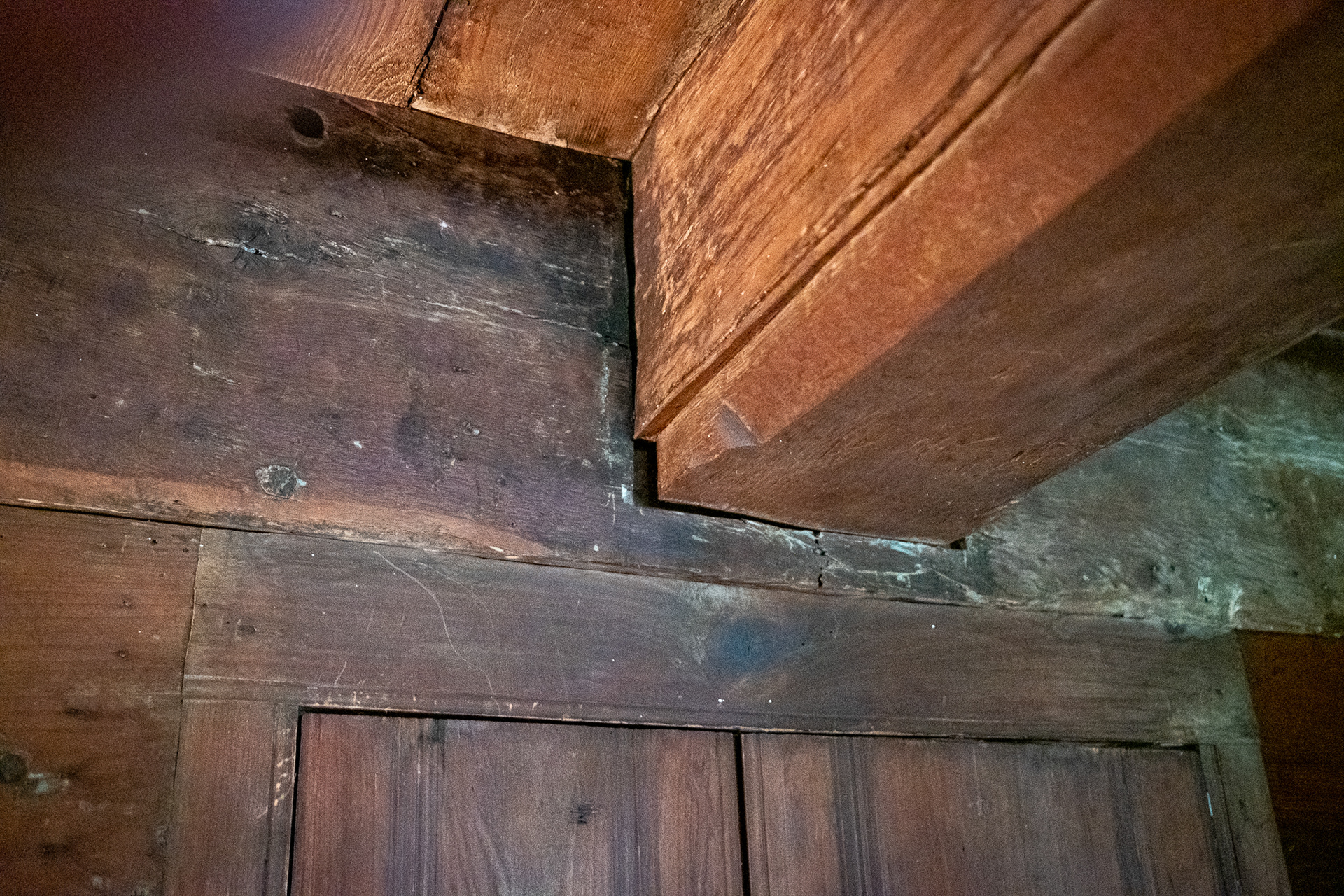

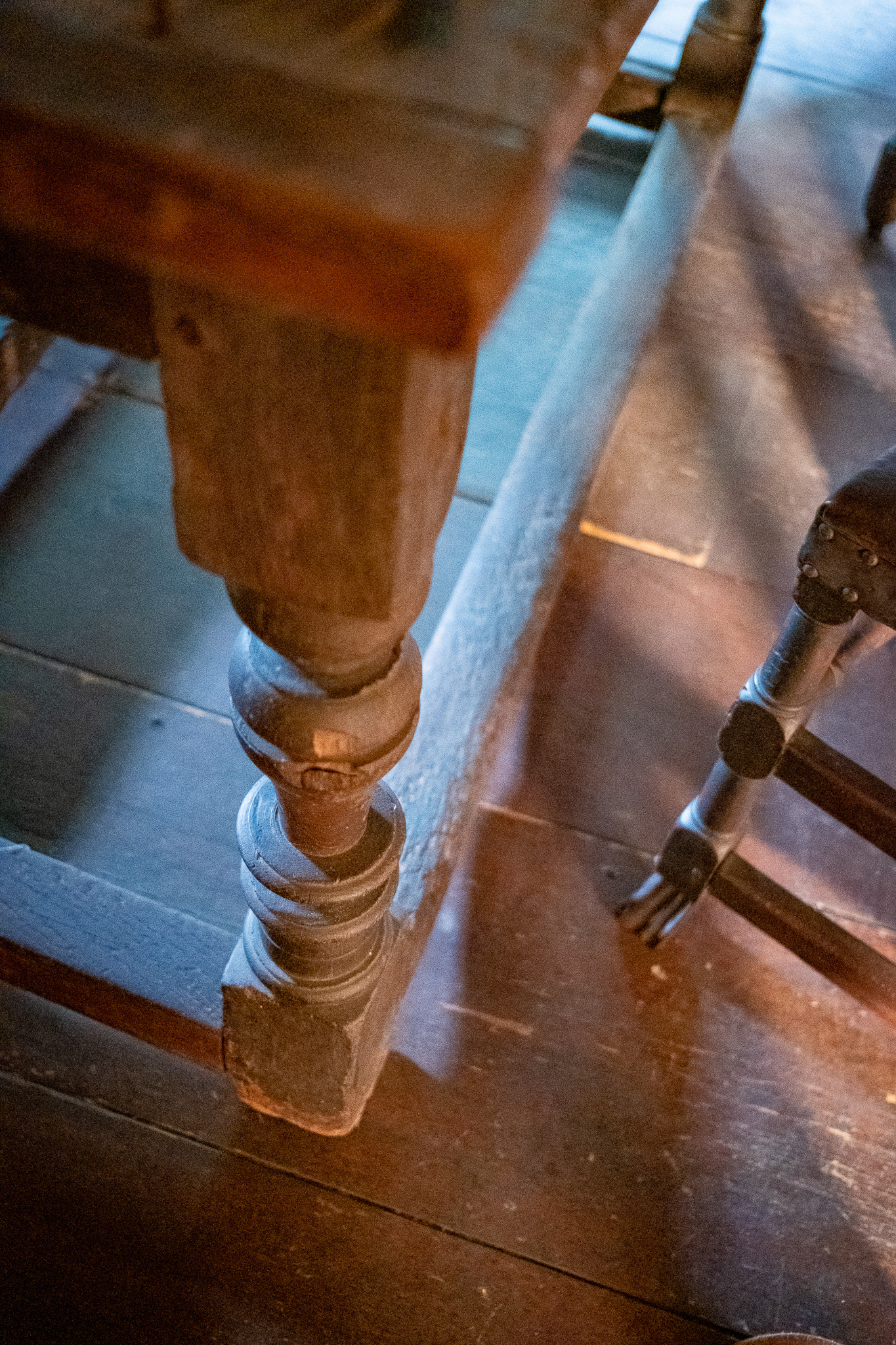
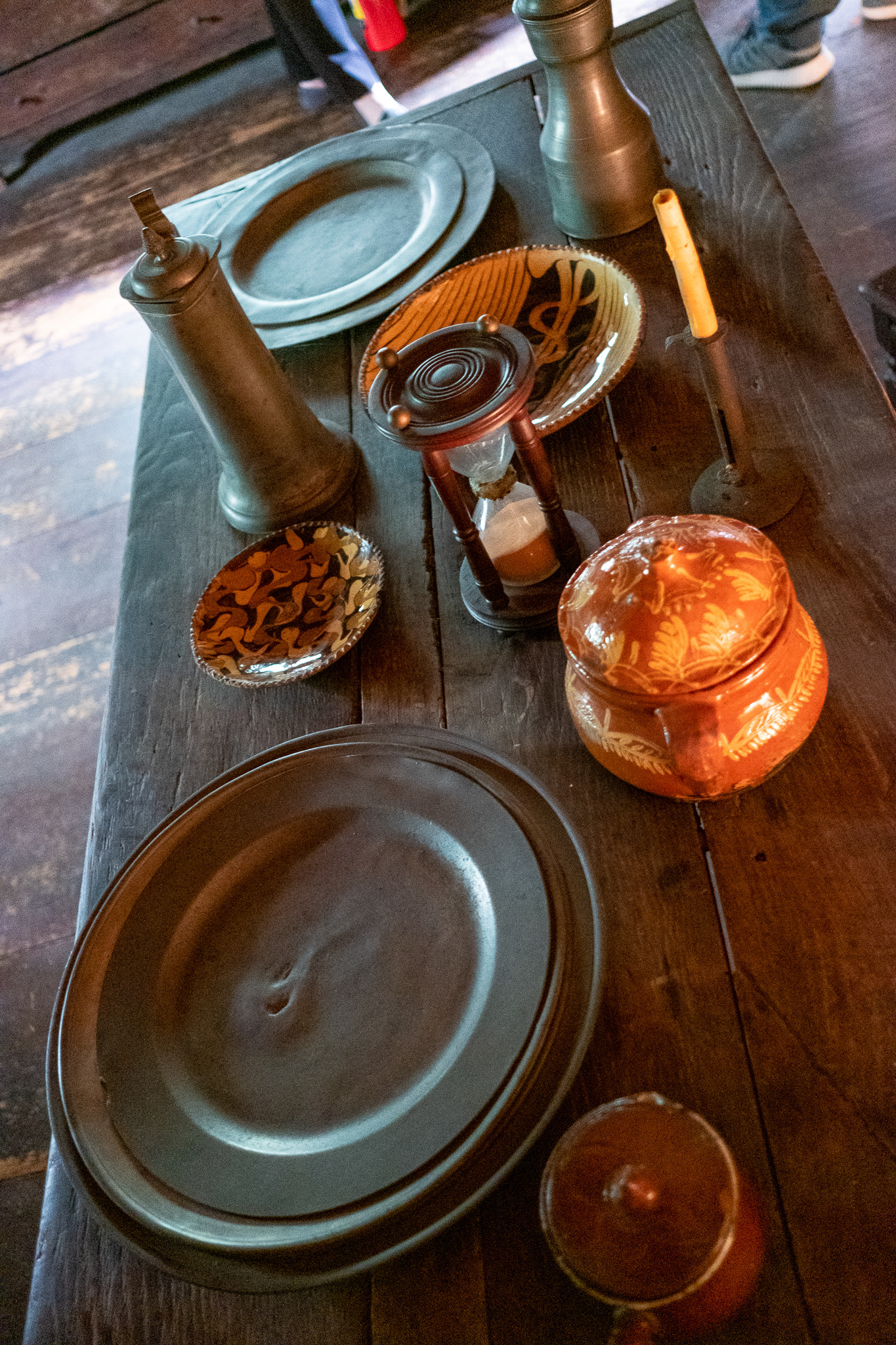

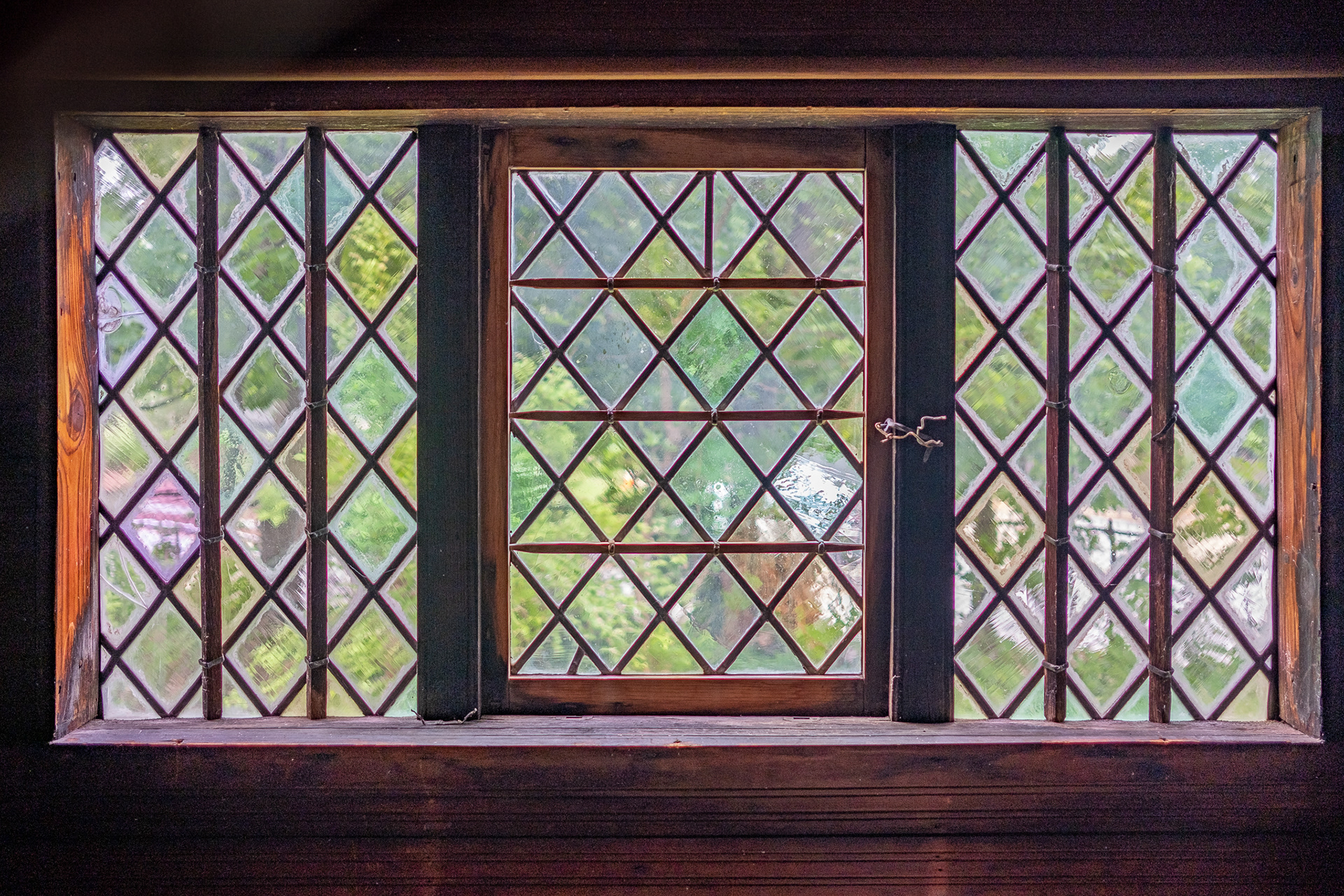

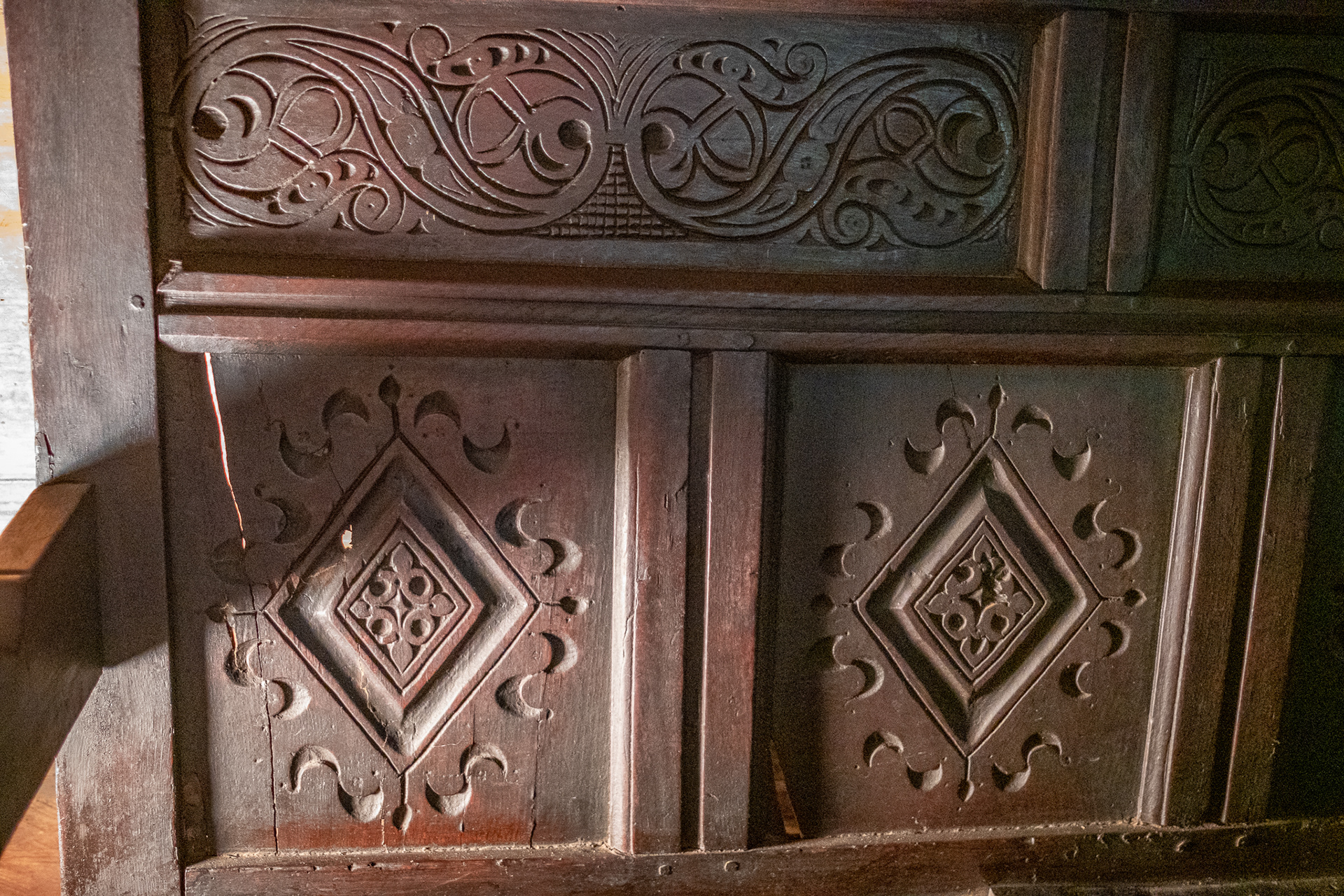

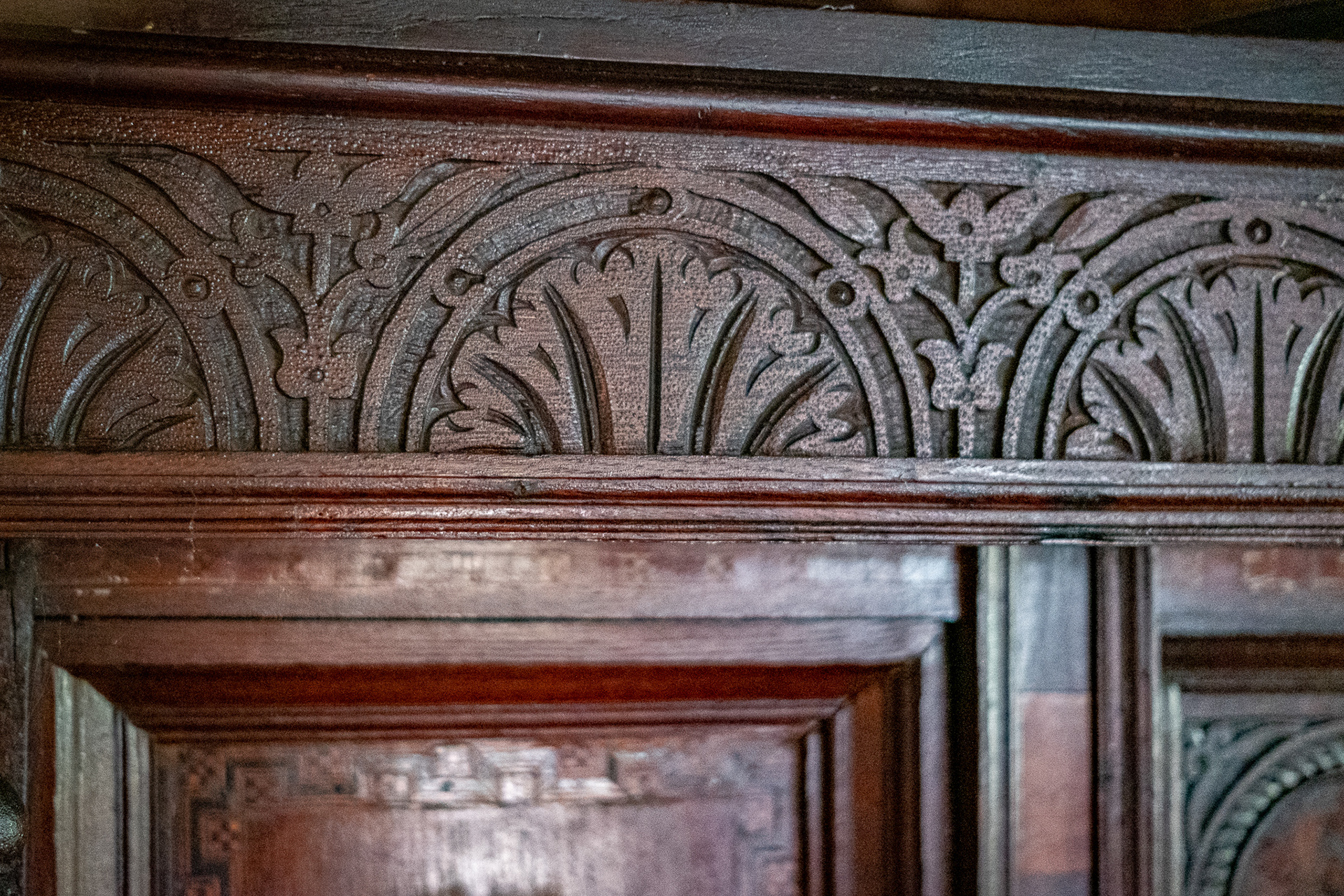

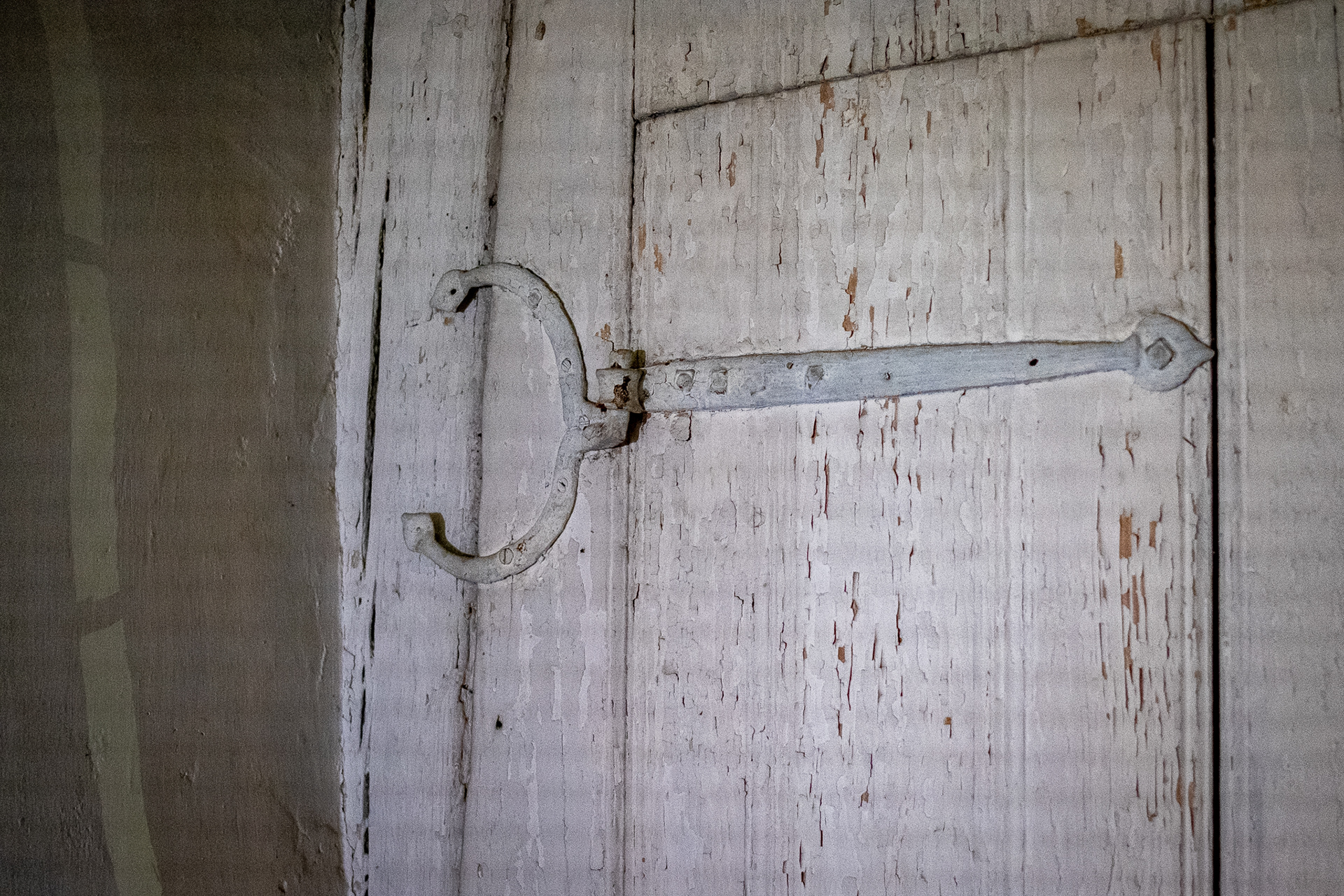
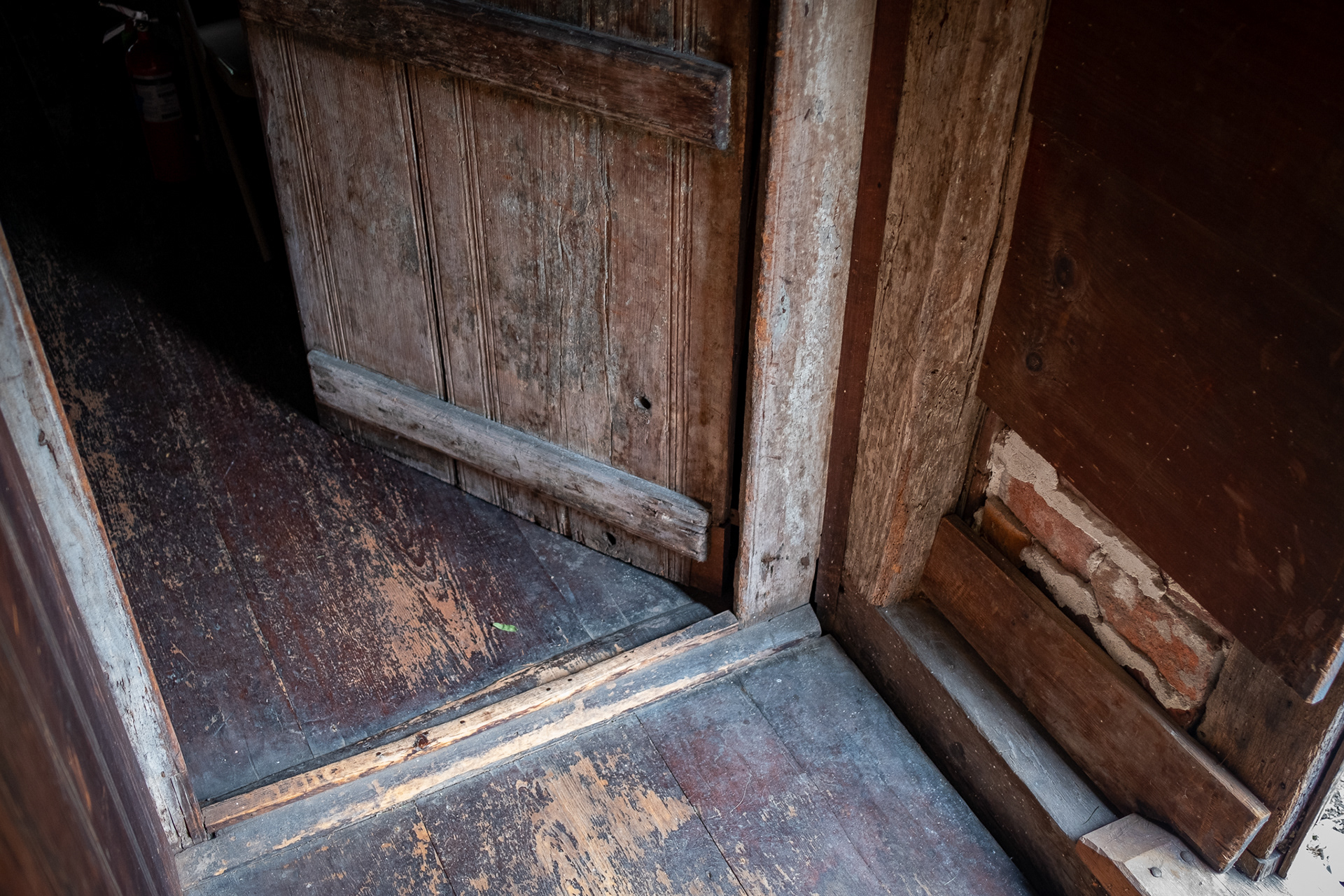
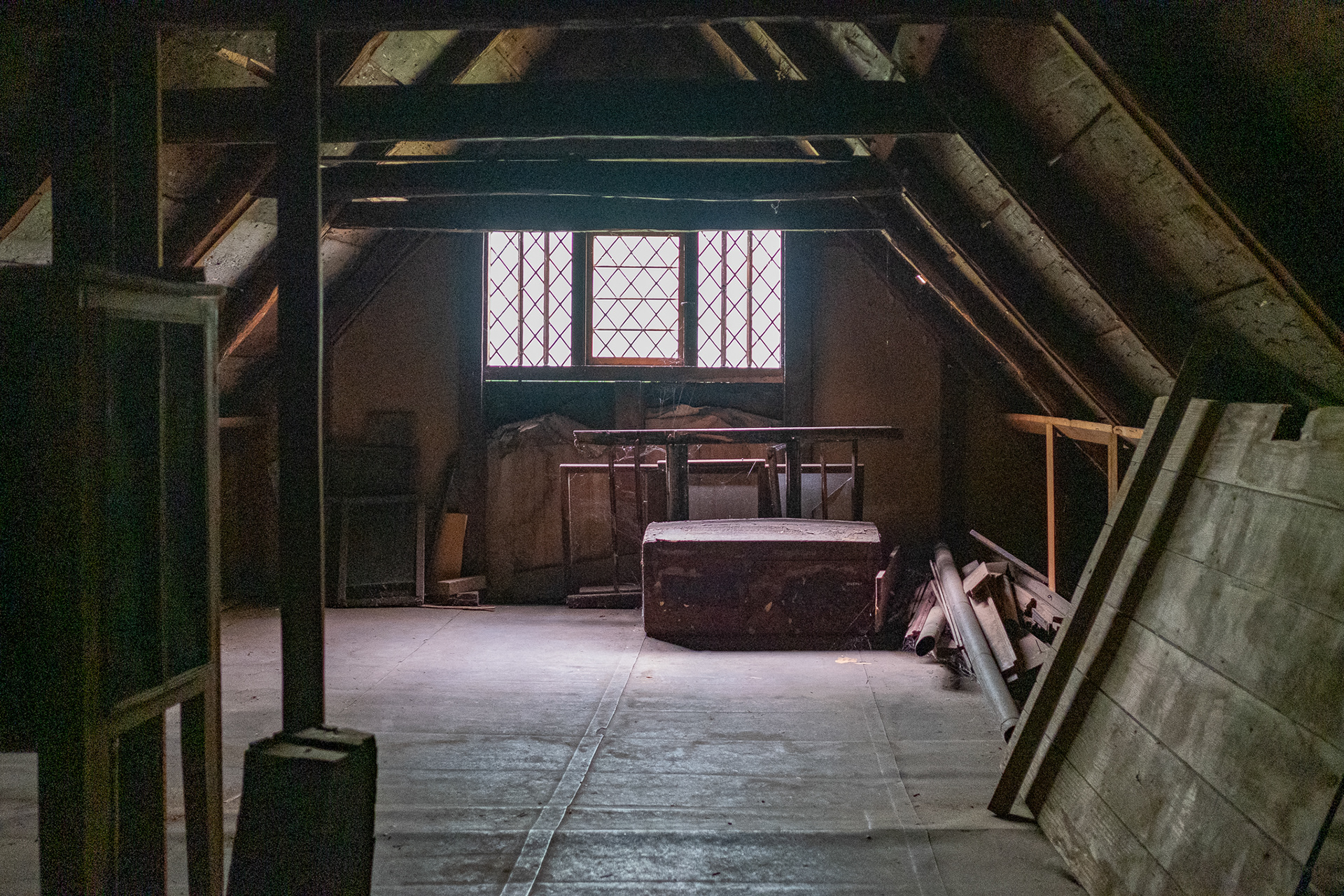
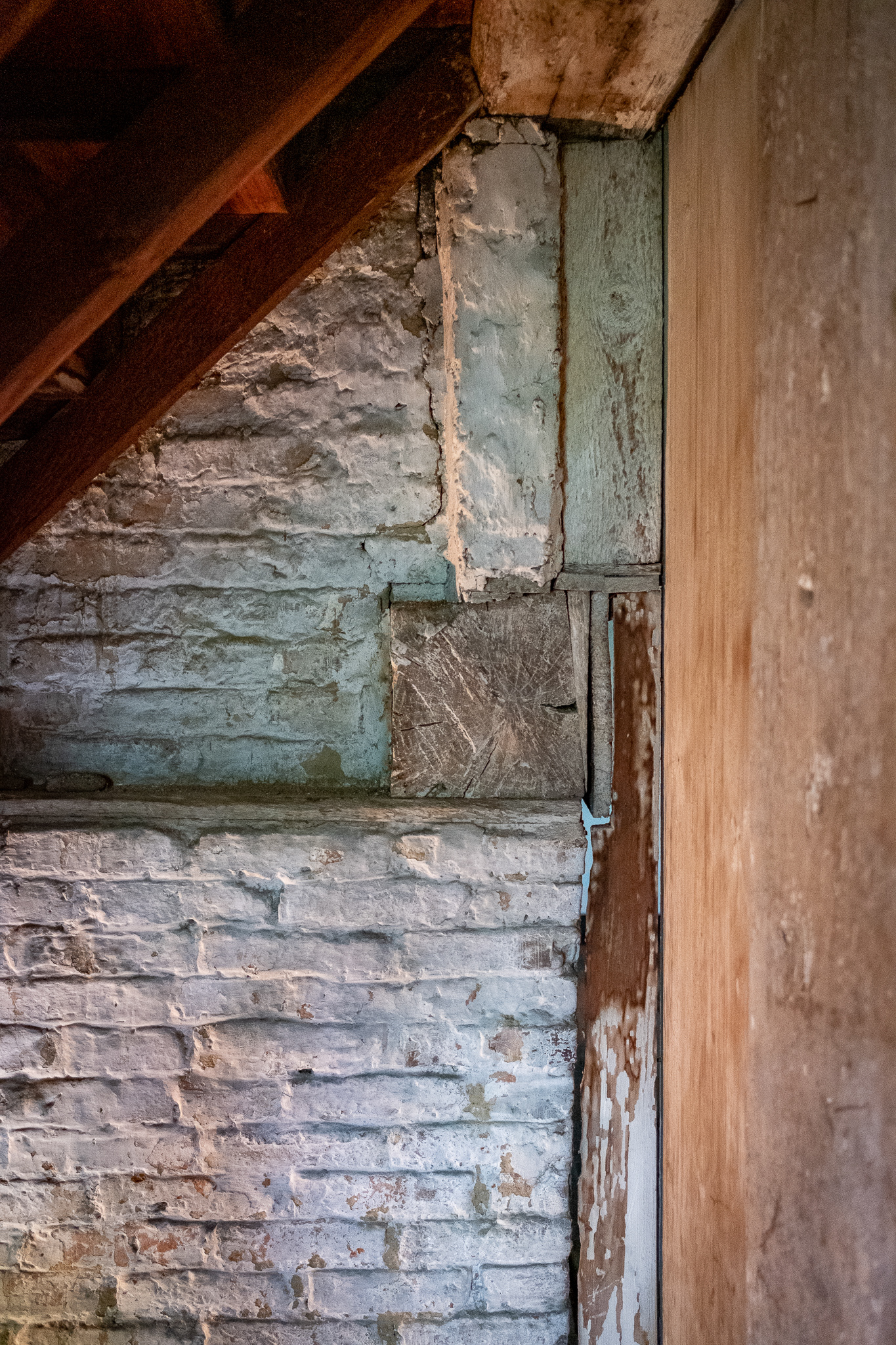
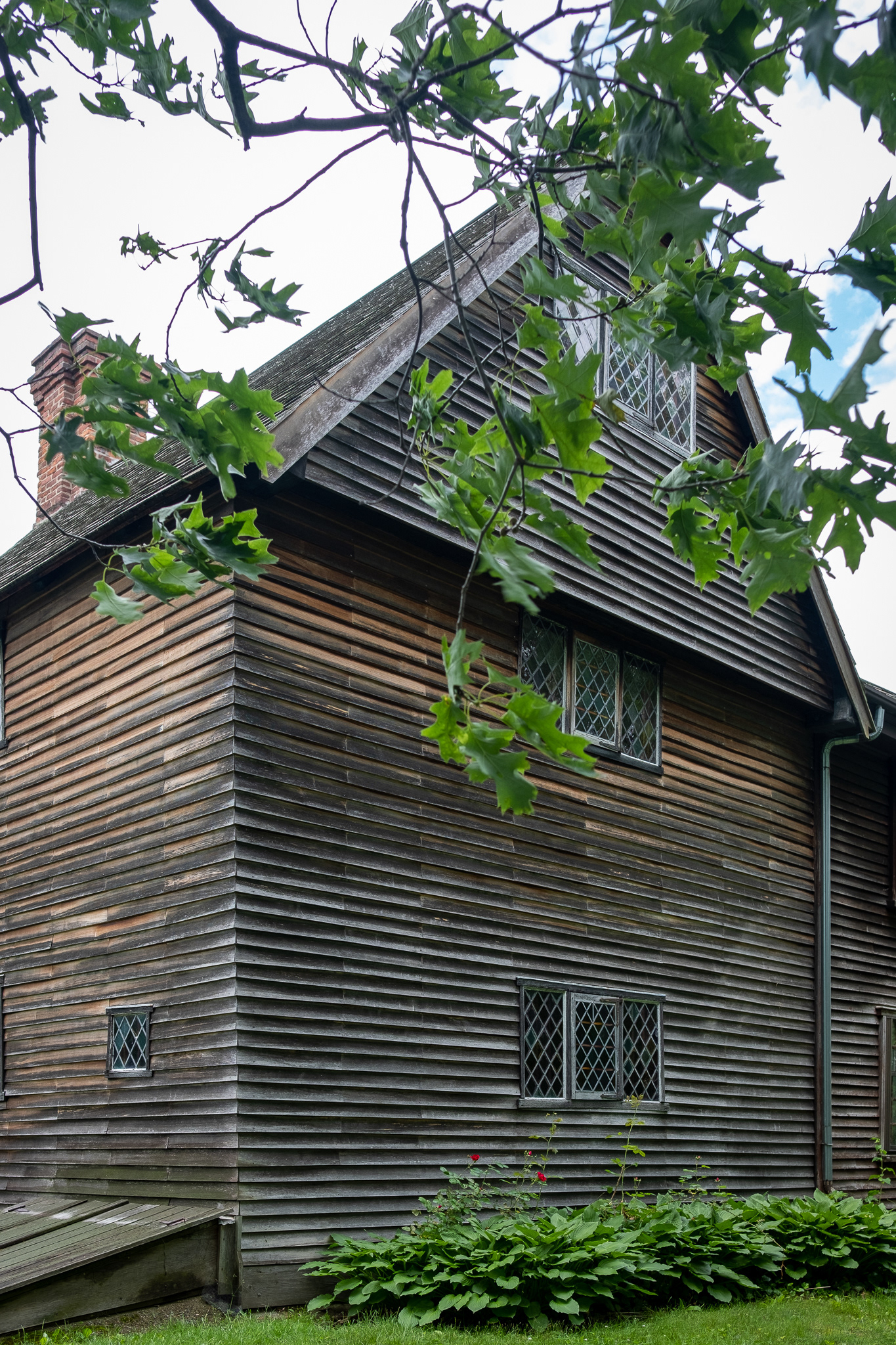
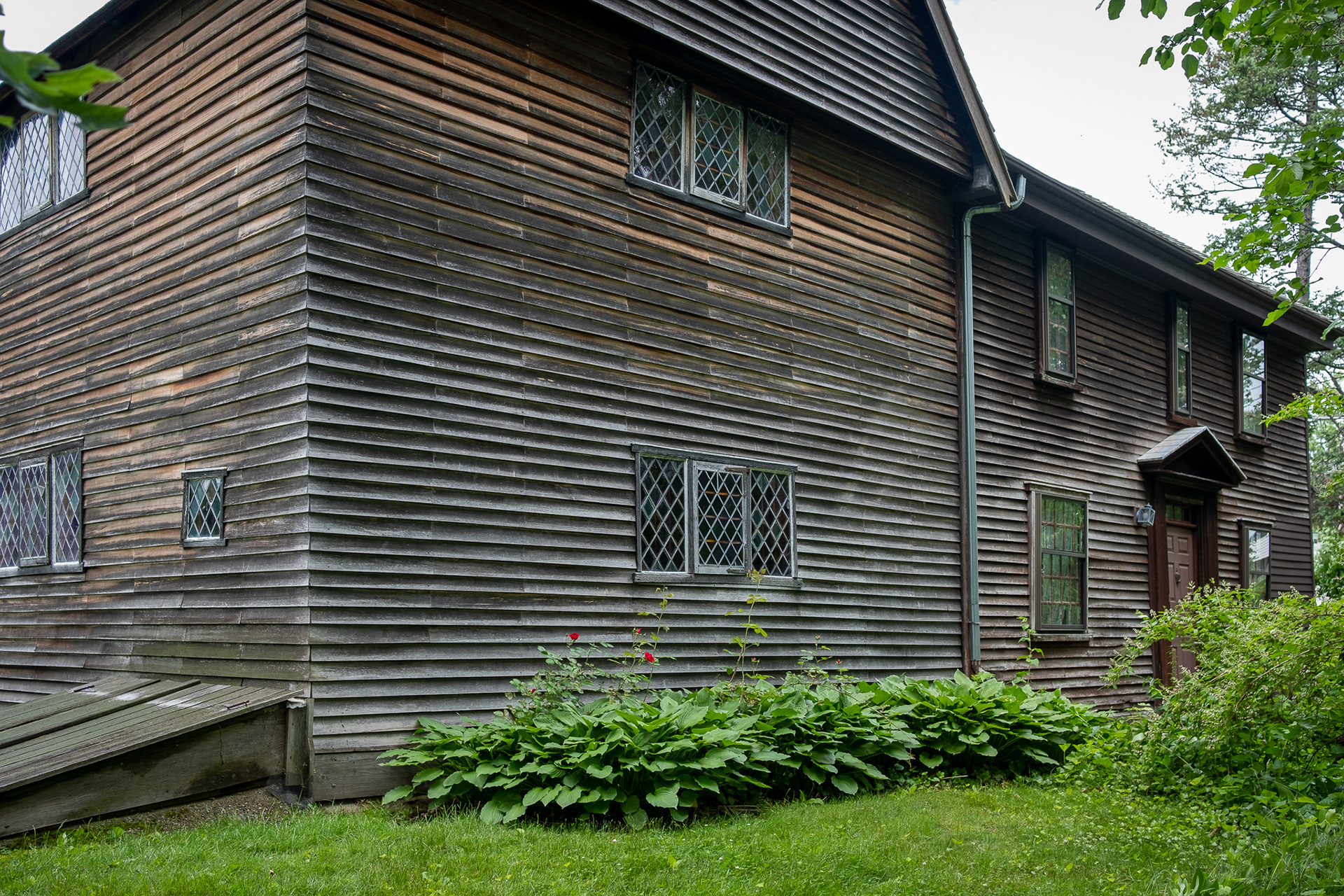
I’ve driven past this old house many times over the years, but only recently had a chance to visit it. What struck me, first, was how dark it is inside. (Only the magic of digital photography allowed me to take pictures.) Then came the realization, like a smack in the face, How hard life must have been for the early settlers. The house was built near the end of the 17th Century, in what is considered the First Period of American architecture. Only the oldest part is open to the public, and then only two afternoons a year (the other wings, added later, are lived in). The house is owned by the nonprofit organization, Historic New England. This is from their website:
Built between 1694 and 1701 for a farming family, Browne House contains rare surviving architectural features from the late 1600s. In a near ruinous state when it was acquired by Historic New England founder William Sumner Appleton in 1919, the house was painstakingly restored in what is acknowledged to be the first fully documented restoration in America. See how a late 1600s family lived in what was considered a “mansion house” at the time.
Browne House is a modest “one-over-one” dwelling with eighteenth- and nineteenth-century additions. Prominent features include a steeply pitched roof, diamond-patterned casement windows, and early door and window placements and styles. During the restoration, an impressive amount of seventeenth-century finish detail was uncovered. There is one large room on the first floor, which incorporated living, cooking, and sleeping space. The upper chamber contains an extremely rare three-part casement window frame.
The Browne House is not only historically important, but its one-over-one profile is now extremely rare, there being fewer than a half dozen such houses surviving in New England, according to Wikipedia. A richly detailed, period-by-period history of the house can be found on the Historic New England website. You’ll have to scroll way down to find it, and you’ll want to click "READ MORE" in each section. If you’re a history buff like me, you won’t want to miss it!









